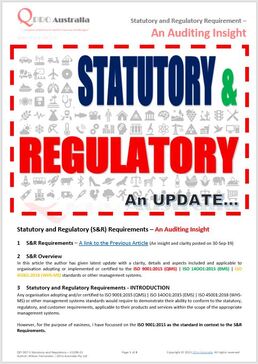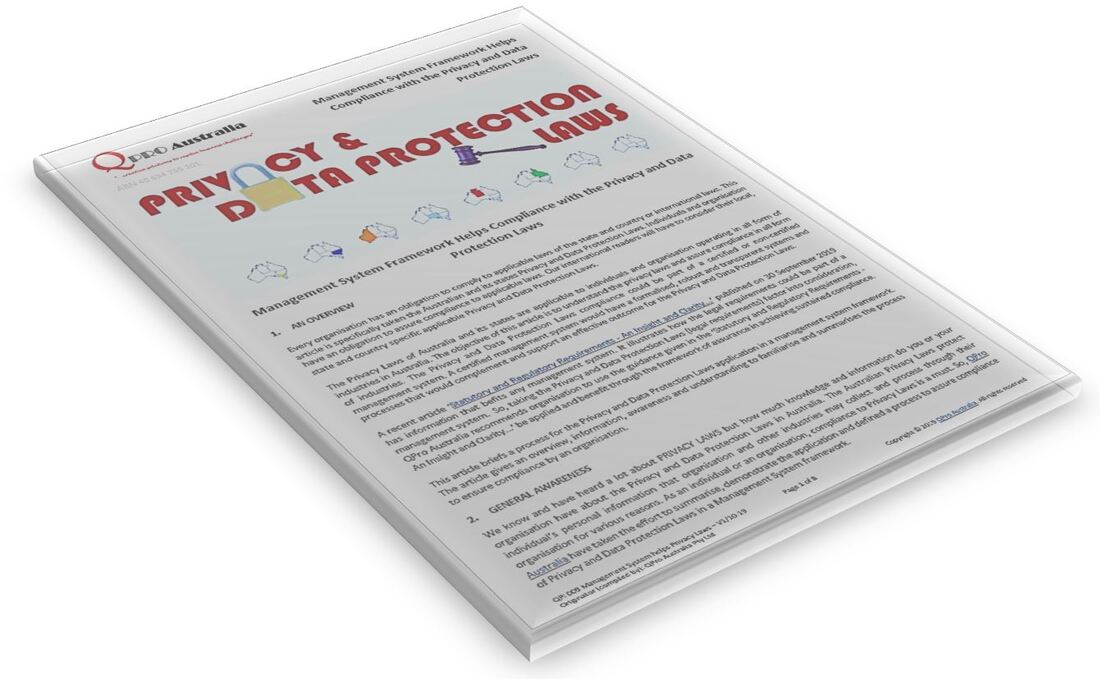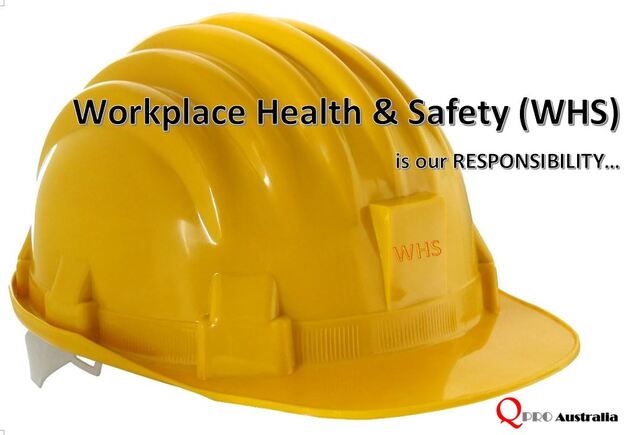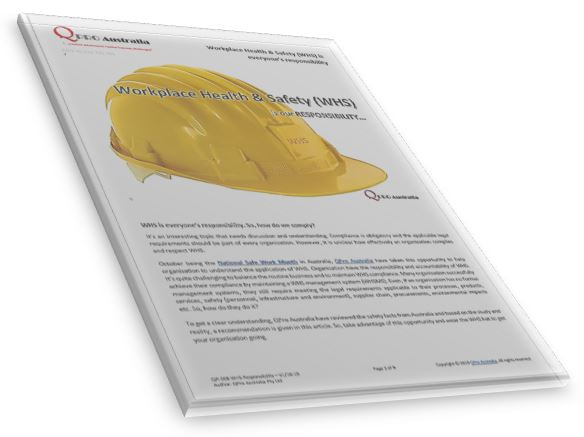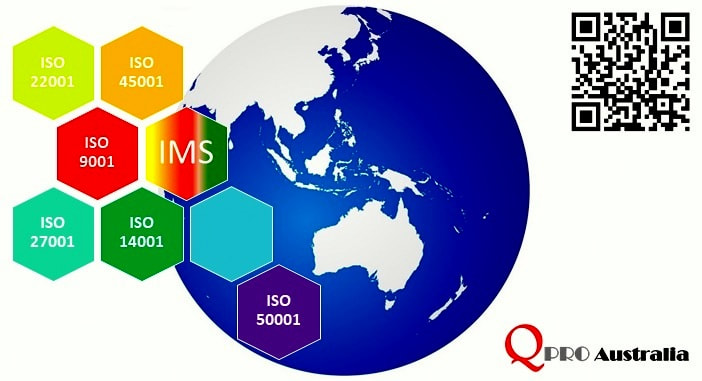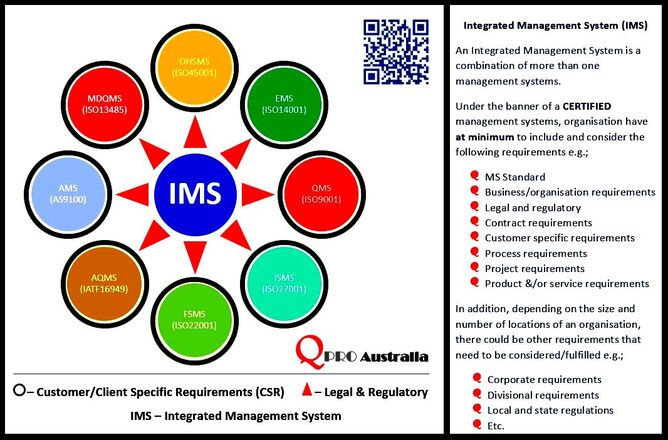MS Information...
Check out the current and past published ARTICLES on LinkedIn
Embracing a Culture of Observance
Enhancing Safety, Security, and Compliance across various Management Systems
In the intricate dance of industry and innovation, where systems and processes are meticulously crafted to ensure efficiency, profitability, and sustainability, one crucial element often overlooked is the human factor. While animals and birds instinctively observe and learn from their surroundings, we humans possess the unique capacity for conscious reflection and adaptation. Yet, in the realm of safety, regulatory compliance, and management systems, are we truly leveraging this capability to its fullest extent? In today's rapidly evolving landscape, the need for robust safety protocols and regulatory adherence has never been more pronounced. From ensuring workplace safety & security to maintaining environmental standards, the stakes are high, with potential consequences ranging from financial loss to irreparable harm to individuals and the planet. It's not merely about ticking boxes on a checklist; it's about cultivating a culture of observance—a mindset where every individual actively engages in recognising, evaluating, and mitigating risks |
Source reference: DIY Best Chicken Feeder
|
Plans and Measures:
How do we bridge the gap between intention and action? It starts with fostering a sense of ownership and accountability at all levels of an organisation. From the C-suite to the factory floor, every individual plays a pivotal role in upholding the integrity of the systems and processes in place. This means going beyond mere compliance and embracing a proactive approach to safety, security, and regulatory adherence.
Central to this approach is the cultivation of mindfulness—a conscious awareness of one's surroundings and the potential hazards they entail. By encouraging employees to be vigilant and proactive in identifying risks, organisations can create a dynamic feedback loop wherein observations inform improvements to existing systems, thereby enhancing their efficacy over time.
Communication:
Effective communication is paramount in ensuring that safety protocols and regulatory requirements are not only understood but embraced by all stakeholders. This involves not only disseminating information but also fostering open dialogue wherein concerns and suggestions are welcomed and addressed in a constructive manner.
Training & Education:
Furthermore, investing in continuous training and education is essential to equipping employees with the knowledge and skills necessary to navigate complex regulatory landscapes effectively. Whether through workshops, simulations, or e-learning modules, organisations must provide ongoing support to empower their workforce to make informed decisions that prioritise safety and compliance.
In tandem with these efforts, leveraging technology can amplify the effectiveness of existing management systems. From IoT sensors that monitor environmental conditions in real-time to predictive analytics that identify potential safety hazards before they escalate, the possibilities are vast for harnessing innovation to enhance safety and regulatory compliance.
Adherence Culture:
Ultimately, cultivating a culture of observance is not merely a matter of ticking boxes—it's a mindset shift that requires and should start from the top management (business owners) and the leadership team. The top-down approach must establish such culture of embracing and observing to do the right things, assess risks, implement right measures and always support and drive to assure that the stakeholders always adhere to the implemented requirements including the applicable statutory and regulatory requirements.
How can it be demonstrated?
The top management (business owners) and the leadership team must have a firm commitment, collaboration, and a system developed that aligns towards continuous improvement. It also means that the business develops and support the lead of
Together, let's rise to the challenge and pave the way for a world where safety, compliance, and sustainability are not just ideals to strive for but realities to be lived and breathed every day.
QPro Australia Administrator 09-MAY-24
How do we bridge the gap between intention and action? It starts with fostering a sense of ownership and accountability at all levels of an organisation. From the C-suite to the factory floor, every individual plays a pivotal role in upholding the integrity of the systems and processes in place. This means going beyond mere compliance and embracing a proactive approach to safety, security, and regulatory adherence.
Central to this approach is the cultivation of mindfulness—a conscious awareness of one's surroundings and the potential hazards they entail. By encouraging employees to be vigilant and proactive in identifying risks, organisations can create a dynamic feedback loop wherein observations inform improvements to existing systems, thereby enhancing their efficacy over time.
Communication:
Effective communication is paramount in ensuring that safety protocols and regulatory requirements are not only understood but embraced by all stakeholders. This involves not only disseminating information but also fostering open dialogue wherein concerns and suggestions are welcomed and addressed in a constructive manner.
Training & Education:
Furthermore, investing in continuous training and education is essential to equipping employees with the knowledge and skills necessary to navigate complex regulatory landscapes effectively. Whether through workshops, simulations, or e-learning modules, organisations must provide ongoing support to empower their workforce to make informed decisions that prioritise safety and compliance.
In tandem with these efforts, leveraging technology can amplify the effectiveness of existing management systems. From IoT sensors that monitor environmental conditions in real-time to predictive analytics that identify potential safety hazards before they escalate, the possibilities are vast for harnessing innovation to enhance safety and regulatory compliance.
Adherence Culture:
Ultimately, cultivating a culture of observance is not merely a matter of ticking boxes—it's a mindset shift that requires and should start from the top management (business owners) and the leadership team. The top-down approach must establish such culture of embracing and observing to do the right things, assess risks, implement right measures and always support and drive to assure that the stakeholders always adhere to the implemented requirements including the applicable statutory and regulatory requirements.
How can it be demonstrated?
The top management (business owners) and the leadership team must have a firm commitment, collaboration, and a system developed that aligns towards continuous improvement. It also means that the business develops and support the lead of
- Integrity
- Ethical and social responsibility
- Respect and values
- Take accountability
- Support morally
Together, let's rise to the challenge and pave the way for a world where safety, compliance, and sustainability are not just ideals to strive for but realities to be lived and breathed every day.
QPro Australia Administrator 09-MAY-24
Statutory & Regulatory (S&R) Requirements - An Auditing Insight
|
Click on the S&R file above to view or download
|
S&R Requirements - An Auditing Insight...
This article is intended to provide the reader and the organisation a brief awareness about the AUDITING ASPECTS of applicable Statutory & Regulatory (S&R) requirements. It gives an insight to the reader and the organisation how to ensure compliance to S&R depending on the type of business the organisation operates. The information contained in this article is a guidance to assure that any organisation with or without a management system certification is obliged to proactively support and comply to applicable S&R requirements of their products and services including the internal processes. The S&R requirements information and reference materials are current at the time of the publication. The contents of this document should not constitute legal advice and legal advice should be sought as required. Click Here to view or download the complete article on S&R Requirements - An Auditing Insight QPro Australia Administrator 20-Aug-21 |
Management System Framework helps compliance with the Privacy and Data Protection Laws
|
Every organisation has an obligation to comply to applicable laws of the state and country or international laws. This article is specifically taken the Australian and its states Privacy and Data Protection Laws. Individuals and organisation have an obligation to assure compliance to applicable laws. Our international readers will have to consider their local, state and country specific applicable Privacy and Data Protection Laws.
|
The Privacy Laws of Australia and its states are applicable to individuals and organisation operating in all form of industries in Australia. The objective of this article is to familiarise organisations and individuals with
- an understanding to the privacy and data protection laws, and
- to assure compliance applicable in all form of industries.
A recent article ‘Statutory and Regulatory Requirements - An Insight and Clarity...’ published on 30 September 2019 has information that befits any management system. It illustrates how the legal requirements could be part of a management system. So, taking the Privacy and Data Protection Laws (legal requirements) factor into consideration, QPro Australia recommends organisation to use the guidance given in the ‘Statutory and Regulatory Requirements - An Insight and Clarity...’ be applied and benefit through the framework of assurance in achieving sustained compliance.This article briefs a process for the Privacy and Data Protection Laws application in a management system framework. The article gives an overview, information, awareness and understanding to familiarise and summarises the process to ensure compliance by an organisation.
WHS is everyone’s responsibility...
|
It’s an interesting topic that needs discussion and understanding. If WHS is everyone's responsibility, how do we comply?
Compliance is obligatory and all applicable legal requirements should be part of every organisation. However, it is unclear how effectively an organisation complies and respect Workplace Health and Safety (WHS). October being the National Safe Work Month in Australia, QPro Australia have taken this opportunity to help organisation to understand the application of WHS. Organisation have the responsibility and accountability of WHS. It’s quite challenging to balance the routine business and to maintain WHS compliance. Many organisation successfully achieve their compliance by maintaining a WHS management system (WHSMS). |
Even, if an organisation has no formal management systems, they still require meeting the legal requirements applicable to their processes, products, services, safety (personnel, infrastructure and environment), supplier chain, procurement, environmental impacts etc. So, how do they do it?
|
To get a clear understanding, QPro Australia have reviewed the safety facts from Australia. Based on these facts, the study and realities of industries in Australia, a recommendation is given in this article. So, take advantage of this opportunity and wear the WHS hat to get your organisation going.
The topics covered in the article are as below:
|
Download the BLUEPRINT for an effective WHSMS per ISO 45001:2018
QPro Australia Administrator 10-Oct-19 |
Statutory and Regulatory Requirement – An insight and clarity
|
All over the world, organisation have to be aware and assure that applicable statutory and regulatory requirements are understood and complied. Most organisation understand their obligatory and mandated requirements in aspects of legal requirements. They have an effective system and process implemented or have a certified management systems. This ensures that organisations maintain a high level of statutory and regulatory awareness and understanding, demonstrate accountabilities with respect to legal compliance.
Yet, there are organisations around us who may be ineffective and/or unaware of what or which legal requirements apply to their business. Such organisation tends to meet only the known legal requirements that are product and service specific. Such requirements are received from customer or project sources they work on. |
Meeting legal requirements may not always be enforceable, but if companies choose to wait, government and regulatory agencies may prompt companies to identify high risk or new legal issues that may result in fines, product recalls, jail terms, loss of business, brand image and more. It all depends on the noncompliance severity and impacts of their products and services.
Managing an effective systems/processes with compliance and conformity of their products & services, can always be a challenge. The level of expectation can be very high; especially in a regulated environment. Without proper systems and processes, business will run inefficiently and risk incurring penalties from failing to comply with legal requirements. This process can become even more difficult and complex when operating within a complex and highly regulated environment where an organisation must deal with multi-country regulations.
We also know that these statutory and regulatory requirements change rapidly. Therefore, organisations have limited time to keep up with the changes, understand the applicability and comply with those requirements.
So, QPro Australia have taken this opportunity to give an insight and clarification on Legal Requirements. The article has considered the clauses to the legal requirements referenced in the three popular management systems i.e. QMS (ISO 9001:2015), EMS (ISO 14001:2015) and OHS/WHS (ISO 45001:2018). The article guides and prompts with steps needed for both certified and non-certified management systems organisation.
We also know that these statutory and regulatory requirements change rapidly. Therefore, organisations have limited time to keep up with the changes, understand the applicability and comply with those requirements.
So, QPro Australia have taken this opportunity to give an insight and clarification on Legal Requirements. The article has considered the clauses to the legal requirements referenced in the three popular management systems i.e. QMS (ISO 9001:2015), EMS (ISO 14001:2015) and OHS/WHS (ISO 45001:2018). The article guides and prompts with steps needed for both certified and non-certified management systems organisation.
|
Here’s an article about the Statutory and Regulatory Requirements:
|
| ||
QPro Australia can assist organisation in the development of the legal requirements systems and processes. In addition, the project can assist to implement, to train and coach personnel, audit and verify effectivity per management systems requirements. The complete project could be tailored to your needs.
A list of generic and industry specific LEGAL REQUIREMENTS source links (5 page document), applicable to your organisation is available by contacting QPro Australia. The 'Legal Requirements Source List' includes Australia (all states), New Zealand and International (limited).
QPro Australia Administrator 30-Sep-19
A list of generic and industry specific LEGAL REQUIREMENTS source links (5 page document), applicable to your organisation is available by contacting QPro Australia. The 'Legal Requirements Source List' includes Australia (all states), New Zealand and International (limited).
QPro Australia Administrator 30-Sep-19
Is your certified management system working for you?
|
We live in a world full of challenges. No matter what form of business you operate. For an organisation to succeed and to maintain a pace with competition, technology, products, services, security, safety and growth, there needs to be effective and manageable systems and processes.
Most organisation these days have got some form of certified management system(s) e.g. ISO 9001 ISO 14001, ISO 45001, ISO 27001, ISO 22001… that reflects their business commitment forward. Yet, there are endless challenges to maintain and operate it effectively. So, the question that we could ask ourselves is |
|
“Is our certified management system (MS) working for us?”
This article has focused on organisations who are certified to ISO management system standards. The topic of discussion is if the MS certification is working effective and has it benefited you. If not, ever wondered why not? So, taking two extreme scenarios whose organisation
QPro Australia Administrator 24-Sep-19
| |||||
An overview to the worldwide 2018 ISO management systems certification
- Survey Results
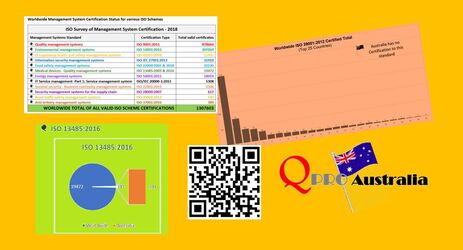
Recently International Organisation for Standardization (ISO) have published the latest annual survey of the ISO Management Systems Certification for 2018. This survey includes TWO new standards and the survey total for the TWELVE Management Systems. The two new standards included are
- ISO 45001:2018 – Occupational health and safety management systems
- ISO 37001:2016 – Anti-bribery management systems
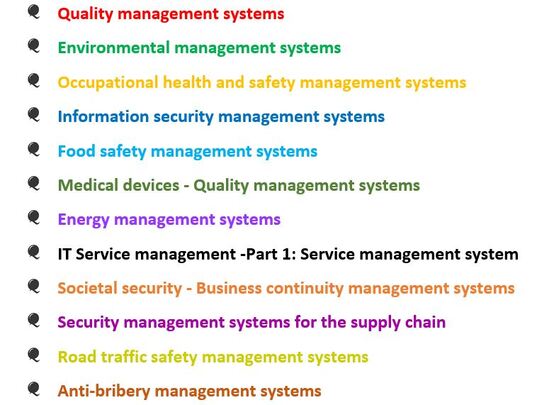
These are the Twelve Management Systems considered in the 2018 survey
The worldwide total of all valid ISO scheme certifications for 2018 were 1,307,603.
The graphical representation in this article would give the reader an insight to the TOP 25 certified management systems in each of the ISO Schemes surveyed worldwide. This report also shows the number of organisation that were certified in each of the ISO schemes in Australia and their spot in the top 25.
It is very interesting to see that Australian businesses are among the top 25 in most of the ISO schemes.
QPro Australia have worked through the certification source data* to demonstrate the total valid certification of the twelve management systems standard. Apart from the graphical charts for the twelve management systems that shows the top 25 countries, QPro Australia have also illustrated using the Pie chart for the total valid and active ISO certificates worldwide vs Australia.
The worldwide total of all valid ISO scheme certifications for 2018 were 1,307,603.
The graphical representation in this article would give the reader an insight to the TOP 25 certified management systems in each of the ISO Schemes surveyed worldwide. This report also shows the number of organisation that were certified in each of the ISO schemes in Australia and their spot in the top 25.
It is very interesting to see that Australian businesses are among the top 25 in most of the ISO schemes.
QPro Australia have worked through the certification source data* to demonstrate the total valid certification of the twelve management systems standard. Apart from the graphical charts for the twelve management systems that shows the top 25 countries, QPro Australia have also illustrated using the Pie chart for the total valid and active ISO certificates worldwide vs Australia.
*Certification source data references: International Organization for Standardization (ISO)
QPro Australia Administrator 17-Sep-19
QPro Australia Administrator 17-Sep-19
| ISO certification survey - 2018.pdf |
Integrated Management System (IMS)
Integrated Management System with a Comparison Matrix (QMS-EMS-WHS)
An Integrated Management Systems (IMS) is the most ideal way to have an effective and unified system. An IMS at minimum has more than one management system and could be integrated and harmonised with other management system standards e.g. QMS, EMS, OHSMS, ISMS, FSMS, AQMS…
The most common and universally popular IMS seen around industries includes QMS, EMS and OHS/WHS management systems.
An Integrated management system at minimum delivers the following benefits to an organisation e.g.;
QPro Australia Administrator 10-Sep-19
An Integrated Management Systems (IMS) is the most ideal way to have an effective and unified system. An IMS at minimum has more than one management system and could be integrated and harmonised with other management system standards e.g. QMS, EMS, OHSMS, ISMS, FSMS, AQMS…
The most common and universally popular IMS seen around industries includes QMS, EMS and OHS/WHS management systems.
An Integrated management system at minimum delivers the following benefits to an organisation e.g.;
- Improves performance and productivity
- Avoid duplication of documented information
- Increases transparency
- Improves accountability
- Establishes consistency
- Cost reduction
- Eliminates waste
- Optimise processes and resources
- Reduce maintenance
- Integrate audits
- Adds value
- Enhances quick decision
- And much more
QPro Australia Administrator 10-Sep-19
| qms-ems-whs_comparision_matrix.pdf |
Growth of certified organisation worldwide...
QPro Australia recently carried out a research to identify active certification of various ISO schemes. The graphical representation in this article would give the reader an insight to the growth of certified management systems worldwide, specific regions and Australia in specific. The intent of the author was to originally focus the status and growth of Australian certification in comparison with worldwide and the East Asia and Pacific region.
Organisation and businesses these days have become more competitive than ever before. This means as an organisation supplying products and services to government organisation, defence, public sectors and many other industries like marine, automotive, aeronautical, agricultural and more are under tremendous challenges and pressure of competitiveness. Some of these factors have enabled the certification growth to various ISO schemes.
QPro Australia has worked through the certification source data* using the most popular management systems e.g. QMS, EMS, OHSMS. So, the graphical charts are purely based on the three management systems. QPro Australia haven’t considered giving any opinions in this article. It is more of an information to you and the reader is welcome to browse the facts, review, discuss and comment as appropriate.
*Certification source data references:
International Organization for Standardization (ISO)
Joint Accreditation System of Australia and New Zealand (JAS-ANZ)
QPro Australia Administrator 05-Sep-19
Organisation and businesses these days have become more competitive than ever before. This means as an organisation supplying products and services to government organisation, defence, public sectors and many other industries like marine, automotive, aeronautical, agricultural and more are under tremendous challenges and pressure of competitiveness. Some of these factors have enabled the certification growth to various ISO schemes.
QPro Australia has worked through the certification source data* using the most popular management systems e.g. QMS, EMS, OHSMS. So, the graphical charts are purely based on the three management systems. QPro Australia haven’t considered giving any opinions in this article. It is more of an information to you and the reader is welcome to browse the facts, review, discuss and comment as appropriate.
*Certification source data references:
International Organization for Standardization (ISO)
Joint Accreditation System of Australia and New Zealand (JAS-ANZ)
QPro Australia Administrator 05-Sep-19
| iso_certification_statistics.pdf |
WHS/OHS comparison matrix
The management system for Health and Safety can be confusing. Below is a link that compares heath and safety standards using ISO 45001, OHSAS 18001 and AS/NZS 4801 QPro Australia are happy to work with you to assist and guide organisation in the development, implementation, auditing, certification processes to suit your needs. For more information, contact us
QPro Australia Administrator 17-Aug-19
QPro Australia Administrator 17-Aug-19

